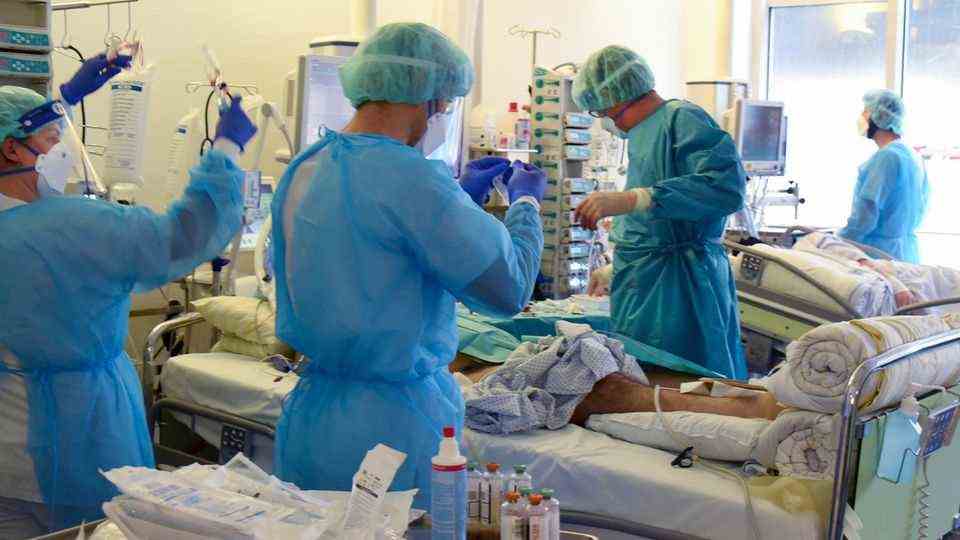Two months ago, the Danes said goodbye to all restrictions. You could afford it. The number of infections was low and the vaccination rate high. But now the virus is back – and a piece of freedom is gone.
Denmark has been a place of longing for many over the past few months. While every little measure and relaxation was bitterly struggled in this country, the Danes seemed to be handling the virus easily. Clear. Confident. And to prance almost lightly through the pandemic. The Danes, they dared something. You were among the first in Europe to venture into lockdown. That was in March 2020 and surprisingly rigorous at the time. At the same time, however, it was also the Danes who relaxed again early on, declined corona measures and strived for freedom.
The kids were back in schools earlier than in most other countries, and those who had been vaccinated, recovered and tested could soon be drinking in bars and sweating in the gym again. Social life returned bit by bit – thanks to a step-by-step plan. Even the masks had been removed from the mouth and nose at some point in order to be able to smell the smell of freedom even better. Because two months ago, the Danes put an end to the limitations and completely lifted all restrictions.
And they celebrated their “Freedom Day” – together, without differences. The vaccinated with the unvaccinated, without testing, without masks, without distance, without anything. And many other countries were amazed at this triumph of the small country and that the virus, it seemed, no longer stung there. “The pandemic is not completely over, but we pulled its teeth,” says Lone Simonsen, pandemic researcher at Roskilde University at the time. The spread of the virus has not yet stopped, but the hospitalization and the deaths. A success that she largely attributed to the vaccination rate.
Everything under control?
Because the Danes also set standards when it comes to vaccination. The country’s vaccination rate is one of the highest in the world. Almost every Dane over 50 is now fully vaccinated (around 95 percent), and in the population over 12 it is a whopping 86 percent. Numbers that other countries can only dream of. Germany for example. According to official information from the Robert Koch Institute, at least 67.3 percent of the total population in this country are completely vaccinated, but the number has only been increasing in homeopathic doses for weeks.
“The epidemic is under control. We have record high vaccination rates”, cheered the Danish Health Minister Magnus Heunicke in August when it was announced that Denmark was also planning to shelve the last Corona formalities. In mid-September, Sars-CoV-2 then lost its status as a social threat and was downgraded to a serious infectious disease. The pandemic law was therefore no longer in force, and the government’s special powers lapsed. Normality returned. But as it turns out, she was probably only visiting.
Because the numbers, they explode again. They have been rising again since the beginning of October. When the measures were adopted, the country had just 200 infections a day, and there are now more than ten times as many. The current value is over 2300 infections. On Tuesday, the incidence in the 5.8 million country was 277.7. A development that, as Simonsen told “Spiegel”, was to be expected. “We’re seeing a rapid rise in infections now, but not a sharp rise in serious illnesses and deaths. In fact, we have very few deaths,” she said.

But the hospitals are also increasingly filling up with Covid-19 patients. According to Simonsen, this development must be paid close attention to. There are currently around 300 corona cases being treated in hospitals across the country. According to the epidemiologist, a reasonable number. Seen over a longer period of time, the limit is 500 patients. In the short term, 800 to 1000 Covid 19 patients could also be treated. However, the situation could become critical in a month, namely when the numbers rise as before.
Roll backwards for the Danes
It is not that experts did not warn against too much euphoria right from the start. The government itself always left a back door open, and did not hide it. “The government will not hesitate to act quickly if the pandemic threatens important functions in our society again,” said the Minister of Health at the end of August. And that situation, the threat to society, is there again. Recently, so many Danes were infected with the virus that the Corona pass, i.e. 3G, should be reactivated from Friday. Even more: the rules are tightened. The recovered status should only apply for six months instead of twelve. In addition, 15-year-olds have to show it, previously the rule applied to everyone aged 16 and over.
The passport is intended to ensure that as much freedom as possible is preserved and that Denmark can remain as open as possible. Anyone who wants to go to the restaurant, bar, club or larger events must show it – inside from 200, outside from 2000 visitors. In other words, reactivation is a step back for the Danes, but one with manageable consequences. For example, no measures are planned in schools. According to Prime Minister Mette Frederiksen, it only becomes “more complicated” for people who have not been vaccinated, and that is correct. If you haven’t done it yet, you should get vaccinated, she said on Monday. Then, as reported by the “NZZ”, several thousand people registered for the vaccination.


